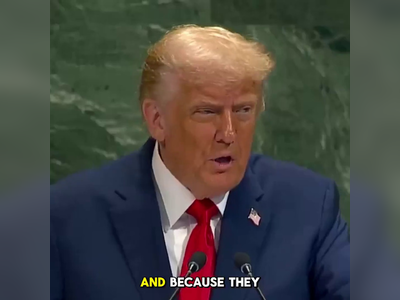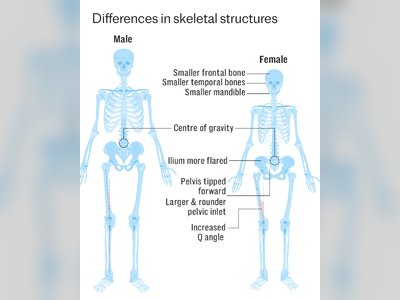Major Infrastructure Projects Threatened Amid Pnrr Timetable Scrutiny
Key Italian infrastructure initiatives face potential exclusion from EU-funded Recovery Plan due to schedule delays
In a pivotal re-evaluation of Italy’s national recovery and resilience plan (Pnrr), several high-profile infrastructure projects face potential exclusion, as pressure mounts to meet tight timelines set out in the European Union's funding agreement.
Among the projects under scrutiny are the Terzo Valico dei Giovi rail link, part of the high-speed railway line connecting Genoa and Milan, a segment of the High-Speed Railway (TAV) between Salerno and Reggio Calabria, the Campolattaro Dam in Benevento, and broadband infrastructure, which may include a strategically significant partnership with Elon Musk's Starlink.
Spearheaded by new Minister Tommaso Foti, who assumed the role in December 2024 following Raffaele Fitto’s move to Brussels as Executive Vice President of the European Commission, the Italian government is under pressure to re-submit a revised plan by February 2025.
The Pnrr, central to Italy's post-pandemic recovery as well as President Ursula von der Leyen’s flagship Next Generation EU initiative, involves allocating substantial funds to bolster infrastructure and public investment while meeting EU-mandated deadlines.
Amid escalating concerns, the revision could impact up to €12 billion in investments.
Notably, efforts are being placed on adjusting interim goals to avoid financial penalties and ensuring significant projects are not left incomplete due to infeasible timelines.
A central focus is the Terzo Valico dei Giovi, a 53 km rail corridor with 37 km built underground, aimed at elevating the freight capacity between the bustling port of Genoa and the industrial hub of Milan.
This project faces engineering challenges compounded by geotechnical issues, making timely completion unlikely.
The government plans to reframe existing milestones into achievable partial objectives to safeguard the €4.3 billion investment.
Similarly, the Salerno-Reggio Calabria railway section is lagging against its 2026 deadline.
Approximately €2 billion are at risk if it fails to progress.
The government is strategizing to replace problematic segments with more feasible sections and secure alternative national funding beyond EU deadlines.
Legislative maneuvers, such as the recent amendment increasing funds for the potential Strait of Messina bridge and allocating billions to rail projects, signal preparatory actions to amend Pnrr allocations.
The revisions extend to the Campolattaro Mega-Dam and concern over municipal initiatives, like the Pinqua housing quality program and digital infrastructure expansion in market-failure regions.
Broadband projects face integration challenges, with reported discussions about leveraging Starlink to extend fiber networks overcoming persistent logistical obstacles.
With February fast approaching, both Rome and Brussels are keen to realign on a workable recovery framework, balancing regulatory requirements against practical implementation realities.
This recalibration seeks to responsibly adjust targets, selectively redirecting funds only where necessary, to maintain the momentum of Italian recovery without sacrificing key infrastructural ambitions.
Among the projects under scrutiny are the Terzo Valico dei Giovi rail link, part of the high-speed railway line connecting Genoa and Milan, a segment of the High-Speed Railway (TAV) between Salerno and Reggio Calabria, the Campolattaro Dam in Benevento, and broadband infrastructure, which may include a strategically significant partnership with Elon Musk's Starlink.
Spearheaded by new Minister Tommaso Foti, who assumed the role in December 2024 following Raffaele Fitto’s move to Brussels as Executive Vice President of the European Commission, the Italian government is under pressure to re-submit a revised plan by February 2025.
The Pnrr, central to Italy's post-pandemic recovery as well as President Ursula von der Leyen’s flagship Next Generation EU initiative, involves allocating substantial funds to bolster infrastructure and public investment while meeting EU-mandated deadlines.
Amid escalating concerns, the revision could impact up to €12 billion in investments.
Notably, efforts are being placed on adjusting interim goals to avoid financial penalties and ensuring significant projects are not left incomplete due to infeasible timelines.
A central focus is the Terzo Valico dei Giovi, a 53 km rail corridor with 37 km built underground, aimed at elevating the freight capacity between the bustling port of Genoa and the industrial hub of Milan.
This project faces engineering challenges compounded by geotechnical issues, making timely completion unlikely.
The government plans to reframe existing milestones into achievable partial objectives to safeguard the €4.3 billion investment.
Similarly, the Salerno-Reggio Calabria railway section is lagging against its 2026 deadline.
Approximately €2 billion are at risk if it fails to progress.
The government is strategizing to replace problematic segments with more feasible sections and secure alternative national funding beyond EU deadlines.
Legislative maneuvers, such as the recent amendment increasing funds for the potential Strait of Messina bridge and allocating billions to rail projects, signal preparatory actions to amend Pnrr allocations.
The revisions extend to the Campolattaro Mega-Dam and concern over municipal initiatives, like the Pinqua housing quality program and digital infrastructure expansion in market-failure regions.
Broadband projects face integration challenges, with reported discussions about leveraging Starlink to extend fiber networks overcoming persistent logistical obstacles.
With February fast approaching, both Rome and Brussels are keen to realign on a workable recovery framework, balancing regulatory requirements against practical implementation realities.
This recalibration seeks to responsibly adjust targets, selectively redirecting funds only where necessary, to maintain the momentum of Italian recovery without sacrificing key infrastructural ambitions.
Translation:
Translated by AI
AI Disclaimer: An advanced artificial intelligence (AI) system generated the content of this page on its own. This innovative technology conducts extensive research from a variety of reliable sources, performs rigorous fact-checking and verification, cleans up and balances biased or manipulated content, and presents a minimal factual summary that is just enough yet essential for you to function as an informed and educated citizen. Please keep in mind, however, that this system is an evolving technology, and as a result, the article may contain accidental inaccuracies or errors. We urge you to help us improve our site by reporting any inaccuracies you find using the "Contact Us" link at the bottom of this page. Your helpful feedback helps us improve our system and deliver more precise content. When you find an article of interest here, please look for the full and extensive coverage of this topic in traditional news sources, as they are written by professional journalists that we try to support, not replace. We appreciate your understanding and assistance.











